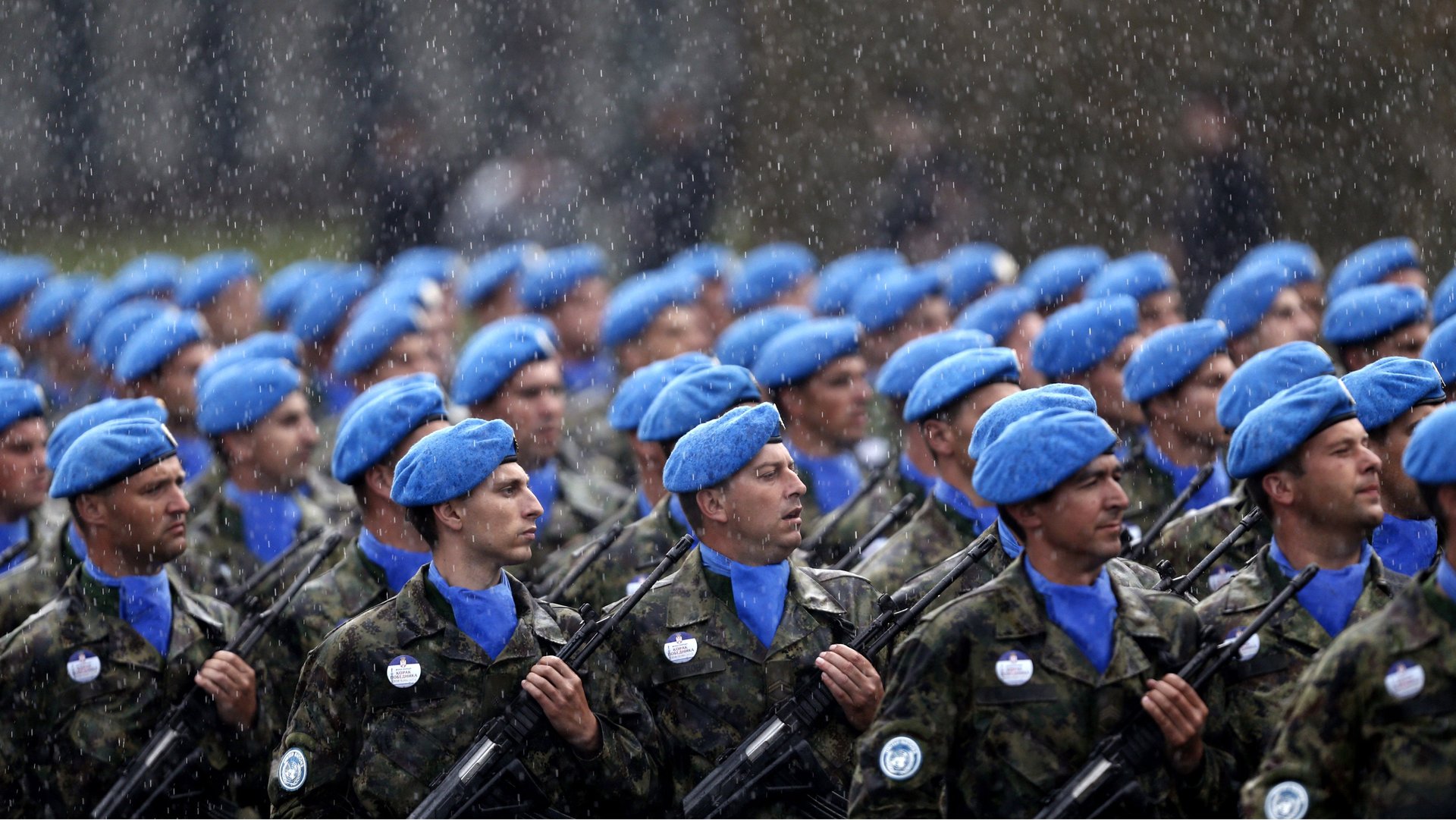Countries without militaries
“The pope! How many divisions has he got?” Joseph Stalin is said to have asked derisively with regard to the physical power of the Catholic Church. The Vatican is one of the rare countries in the world without armed forces. But it’s not totally alone. More than 20 other countries lack standing armies, though the length of the list varies depending on how you count armies and countries (and it grows substantially longer if you include autonomous territories like Puerto Rico and the Cayman Islands).


“The pope! How many divisions has he got?” Joseph Stalin is said to have asked derisively with regard to the physical power of the Catholic Church. The Vatican is one of the rare countries in the world without armed forces. But it’s not totally alone. More than 20 other countries lack standing armies, though the length of the list varies depending on how you count armies and countries (and it grows substantially longer if you include autonomous territories like Puerto Rico and the Cayman Islands).
The CIA World Factbook lists 22 independent countries that don’t have regular military forces—23 if you decide, contra the CIA, not to count Vatican City’s largely ceremonial Swiss Guard as a military. Here they are (sorry, Swiss Guard):
Not entirely by coincidence, these countries include seven of the world’s 10 smallest independent countries by land area—a list that, in addition to the Holy See, comprises small island nations like Tuvalu and Nauru, as well as San Marino, another landlocked city-state on the Italian peninsula. “Traditionally [those countries] weren’t subject to invasion,” explained Peter Stearns, a George Mason professor who edited the 2013 book Demilitarization in the Contemporary World. Some formerly US-administered territories, like the Marshall Islands and Palau, simply never established militaries after achieving independence, instead leaving the US in charge of their defense.
But there’s also another set of countries on the list—those that had militaries and then gave them up. Four of them are in Latin America and the Caribbean, which, Stearns told me, is “not usually a war-prone region” in the sense of countries invading each other (though the region does have a long history of civil wars and military dictatorships). Individual demilitarization stories differ. Costa Rica, for example, abolished its military in 1948 at the initiative of then-President José Figueres Ferrer, who, as the Council on Hemispheric Affairs has pointed out, himself came to power “through an armed insurrection” and may have abolished the military “in order to avoid a future potential military coup against him.” The armies of Grenada and Panama, meanwhile, were both abolished following US invasions in 1983 and 1989, respectively.
The pope’s divisions aside, there’s also a good deal of debate about what constitutes a military. Costa Rica, for example, is in a dangerous neighborhood along a key drug-smuggling route, and it also has a long-standing border dispute with its northern neighbor Nicaragua. The journalist Robert Beckhusen has argued that Costa Rica’s 70-man Special Intervention Unit, a commando team that in his words “trains to intercept narco traffickers, in addition to rescuing hostages and acting as a high-intensity counter-terrorist unit,” is a “military force in all but name.” After 7,000 US service members deployed to the country in 2010 to assist in counter-narcotics efforts, Bolivian President Evo Morales said Costa Rica did have an army: the United States military.
“There’s no perfect measure” of not having a military, Stearns said. Virtually all the countries the CIA lists as having no formal militaries have some form of security service, and the degree to which they focus exclusively on internal threats varies. Iceland, for example, is a member of NATO and participates in international peacekeeping missions with what the CIA calls ”a civilian-led Crisis Response Unit.” As Stearns noted, however, “In my opinion, if you commit to avoid external violence, you’ve taken an interesting step.”
It’s also potentially a cost-effective step. According to the CIA, military expenditures vacuumed up 2.42% of global GDP—some $2 trillion—in 2012. If you don’t have to pay for an army, why would you?